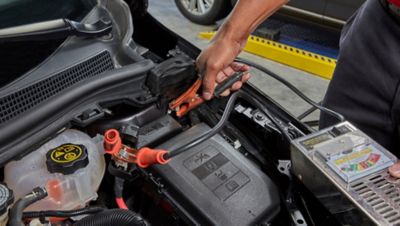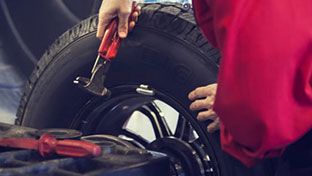A hot drink, fleece pullover, warm boots, the scarf Aunt Millie sewed for you when you were seven... you name it. We all have a few favorite things that keep us warm as winter's chill moves in, and you wouldn't dream of setting out on a blustery day without them. But what about your car? It needs cold-weather TLC, too, so here are a few easy-to-follow checklists to get your car winter ready.

PRE-WINTER PACK LIST
Trunk Items
- Tire pressure gauge: Cold weather can do a number on tire pressure, so keep a gauge handy for frequent checks.
- Learn how to check tire pressure.
- Tire jack: You'll need this little guy if you need to change a flat. See steps for changing a flat tire.
- Healthy spare: Check that your spare tire (if your car has one) is in good condition and properly inflated.
- Jumper cables: Your car battery powers your starter through a series of chemical reactions, and in winter, these reactions fire at a slower pace. This means your starter has less power to start your engine, so you may need a jump to get you going.
- Flares: On a dark road, your stranded car is nearly invisible to oncoming traffic. Safety flares will help cars steer clear of you and quickly alert roadside assistance to your location.
- Gravel, salt or small piece of carpet: All of these items will help you gain some extra tire traction should you get stuck in the snow.
In-Car Items
- Extra jacket, blanket and non-perishable snacks: Food, water and warmth are three things your body needs to survive should you be stranded in below-freezing temps while you wait for help to arrive.
- First-aid kit: In case of a non-life threatening accident, it's smart to have a few basic medical supplies on hand.
See what the American Automobile Association (AAA) carries in their roadside kit
PRE-DRIVE TO DOS
- Install snow tires: Putting four snow tires on your vehicle for safer handling and stopping distance. See our Q&A article to understand why you may need snow tires.
- Check the weather: Know the forecast and current road conditions, and then trust your common sense. If your normal route isn't drivable, use an alternate route or don't go at all.
- Check fuel: Gas lines can freeze in frigid temps, so aim to keep your gas tank at least half full to avoid frozen lines.
- Dress for the drive: Puffy coats with fur-rimmed hoods are cute if you're going for the Clark Griswold look, but they're not the best choice for winter driving. Choose warm clothes that keep your peripheral vision clear and are less bulky for easy maneuvering.
BEFORE YOU CRANK
- Set your seat: Sit in your seat and press the brake pedal to the floor. Then adjust your seat so you can press the pedal but also bend your knee slightly. At this position, you should also be able to grip the steering wheel comfortably with your elbows slightly bent, which is a safe distance should the airbag deploy.
- Move your mirrors: Your goal is to see as much of what's going on around you as possible from three points of view — your rearview mirror, your side mirrors and over your shoulders. So adjust your mirrors accordingly to reduce blind spots.
- Buckle your belt: Once your seat and mirrors are set, fasten your seat belt and crank 'er up.

